As he flies along the arterials that stretch through Seattle and climbs the steep hills that dominate the horizon, Danny Roberts feels a sense of deja vu. As he flows block after block, mile after mile, Roberts recognizes every street because he has bicycled every street of his hometown.
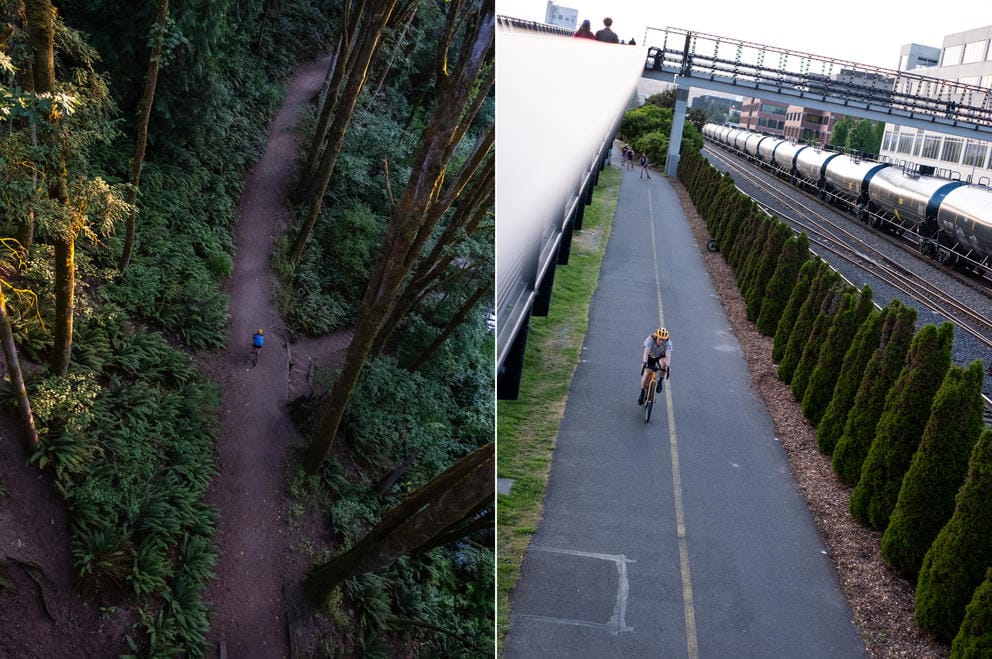
Roberts rides two of his favorite spots: a path in Ravenna Park, left, and the Elliott Bay Trail in Myrtle Edwards Park, right. (Conor Courtney for Crosscut)
Beginning in January 2022, Roberts began taking new routes to work and disappearing for hours to bike streets in remote parts of the city.
“That sounded really fulfilling to me, to have biked every single street in this place that I love,” says Roberts.
Roberts can’t point to one single moment that inspired this journey; it was a culmination of his relationship with Seattle.
Roberts grew up here until he was 11 on a leafy dead-end street in north Seattle. During the 2008 recession, his father’s company moved them across the country to Massachusetts.
But Roberts never stopped loving Seattle. His dad would gently tease him for saying, “I like the clouds better” here.
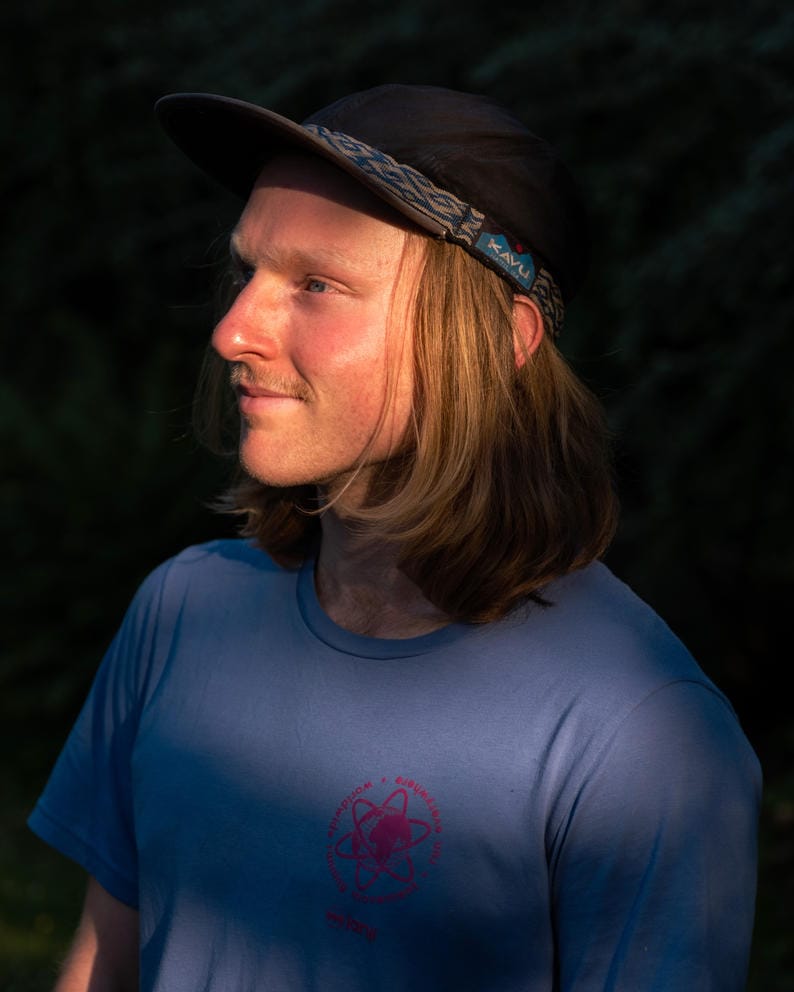
Roberts spent 13 months biking every street in Seattle, finishing the project in February 2023. (Conor Courtney for Crosscut)
After high school, Roberts moved back to attend the University of Washington. Since then “It’s sort of been this compounding love and interest of Seattle.”
Roberts began to encounter places he’d been as a kid, like a Dick’s Drive-In or fields where he’d played soccer. As he explored more, he became enamored with Seattle’s geography. He speaks lovingly of the city’s seven hills, the glaciers that carved Puget Sound, and the Juan de Fuca tectonic plate that birthed the Northwest’s volcanoes.
In an undergraduate social science class on homelessness, Roberts had to recreate historic photos of homelessness in Seattle, of tent cities that occupied areas of SoDo and Downtown. Roberts began getting close with the city’s history as he rode around Seattle to recreate those images.
He also took photos of the beautiful mansions he passed along the way, pushing back against the narrative that Seattle had been overtaken by ugliness and poverty.
“People in Seattle look like they’re wearing Arc’teryx and they just got out of their Tesla on their way to their million-dollar small home in Madrona,” Roberts laughs as he describes what he thinks of as the average Seattleite.
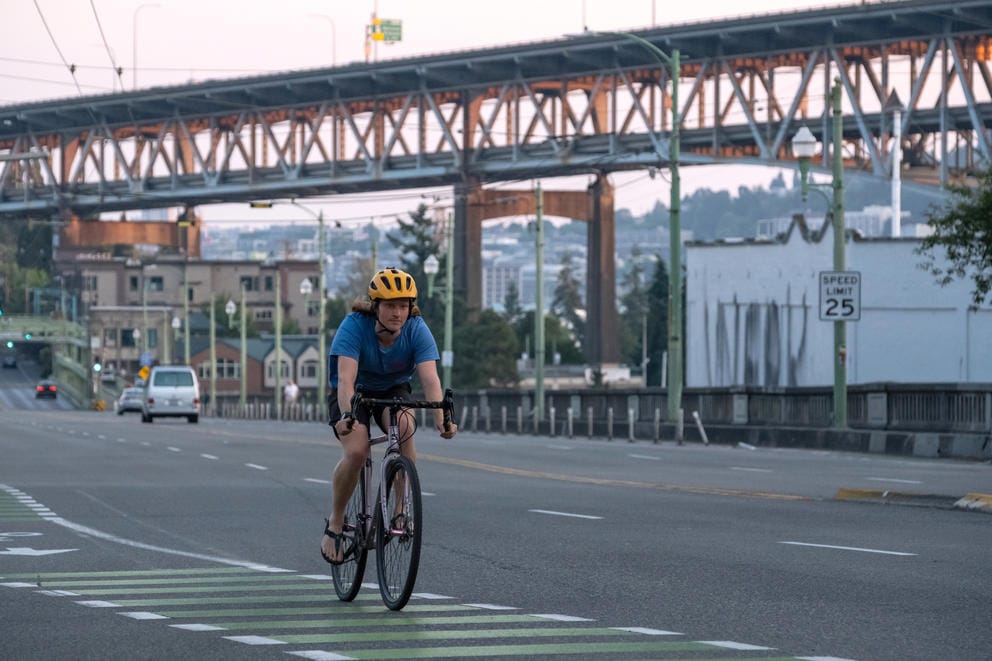
Roberts rides across the University Bridge on July 5, 2023. He says Roosevelt Avenue and 15th Avenue are two of his favorite streets to bike near his home, as long as he hits all the green lights. (Conor Courtney for Crosscut)
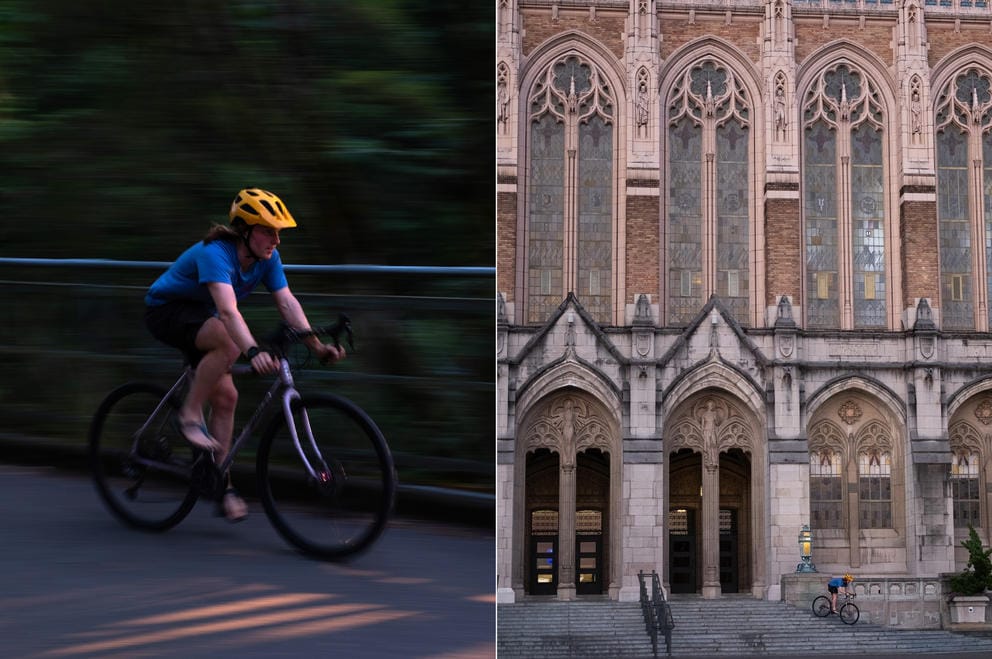
Roberts rides across the Ravenna Park Bridge (left), then down a set of stairs in the University of Washington's Red Square (right). Roberts is a graduate student studying aeronautics and astronautical engineering. (Conor Courtney for Crosscut)
He spent summer 2021 hiking across Oregon and Washington and began thinking about his life. When he returned to Seattle in the fall, he heard that someone had biked every street in San Francisco.
“And I was like, that sounds cool. I'm curious if I could do that in Seattle, because I love biking. I'm about to be living in Seattle for the foreseeable future, I love exploring new stuff, so I decided to do it,” Roberts says.
He pored over maps and estimated the mileage and time it would take him to finish the project. He had already ridden about a quarter of the city’s streets, and, with roughly 2,000 miles to go, began in earnest in January 2022.
His friends and family weren’t surprised, Roberts says, “I definitely have a reputation with my friends and family of doing adventurous and hard physical and logistical tasks.”
Aisling Doyle-Wade, Danny’s partner, admits at the beginning of the project, “I thought it was a little nuts. I just felt it was unattainable. Then Danny started disappearing for four-hour rides a couple of nights a week and he’d have filled in a whole neighborhood.”
Roberts began using Wandrer to track his rides. He filled in the grids of neighborhoods like Bryant and Columbia City and the squiggly streets of hilltop areas like Magnolia and West Seattle. Strava, a popular fitness app, became a place for Danny to reflect on his travels.
He couldn’t bike every street listed on Wandrer, because some paths are under construction, have been repurposed or no longer exist, and GPS glitches meant some streets were missed. Instead of trying to tick off everything, Roberts says, “I wanted to bike every street in Seattle. I didn’t want to bike every alley and path.”
Friends occasionally joined him, but he mostly rode solo. Roberts found that his favorite roads followed the topography of the city, mirroring the contours of the hills instead of a grid, like Bonair Drive in West Seattle.
He rode by sweet cats, saw people having sex on a public staircase in West Seattle and was lucky not to get chased by any dogs. He burned through brake pads and a bike chain on the bike he’d built himself for $350 with scavenged and repurposed parts.
On winter nights when the sun set at 5 p.m. and the darkness was complemented by rain, Roberts traced the lines of boulevards and avenues. He crisscrossed streets on sweltering summer days and crisp fall nights, drawing closer and closer to the rubber of his tires touching every street.
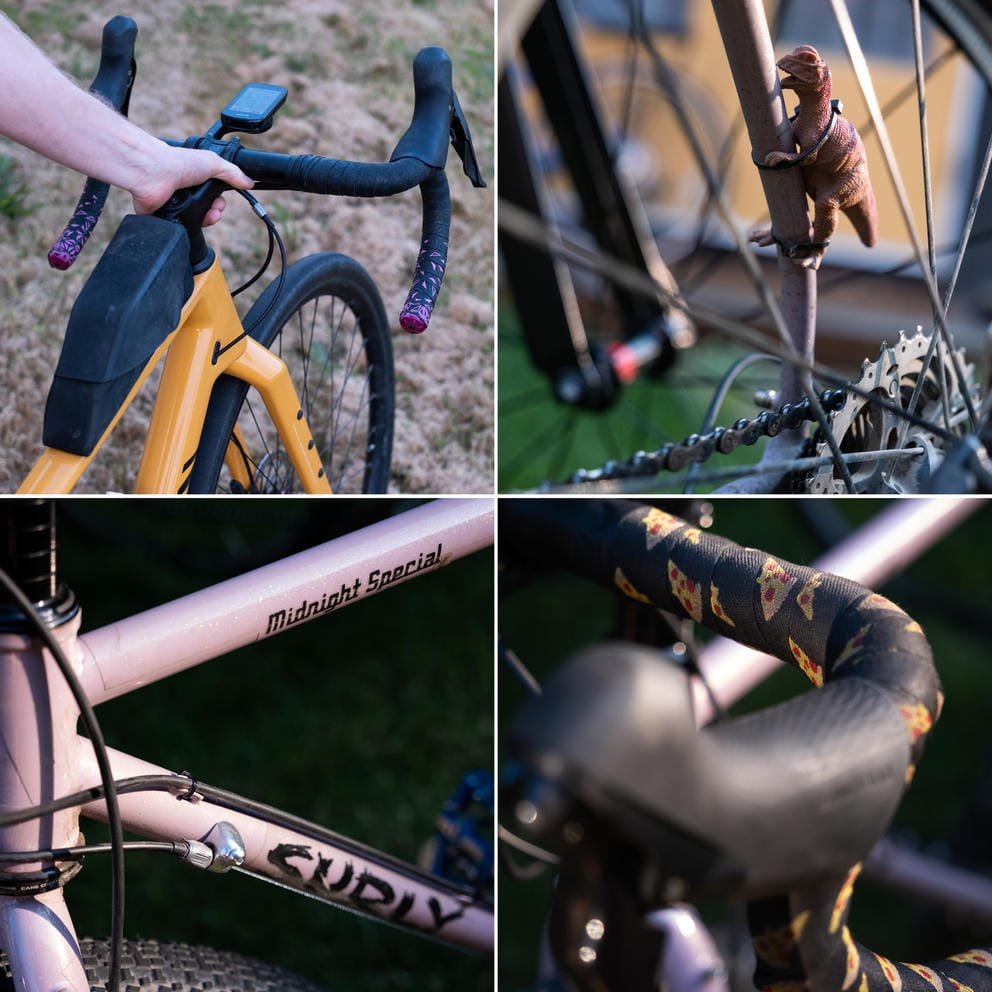
Roberts used three different bikes — including a Canyon Grizl, a Surly Midnight Special and one he built himself — and multiple sets of brake pads during his year of riding every Seattle street. (Conor Courtney for Crosscut)
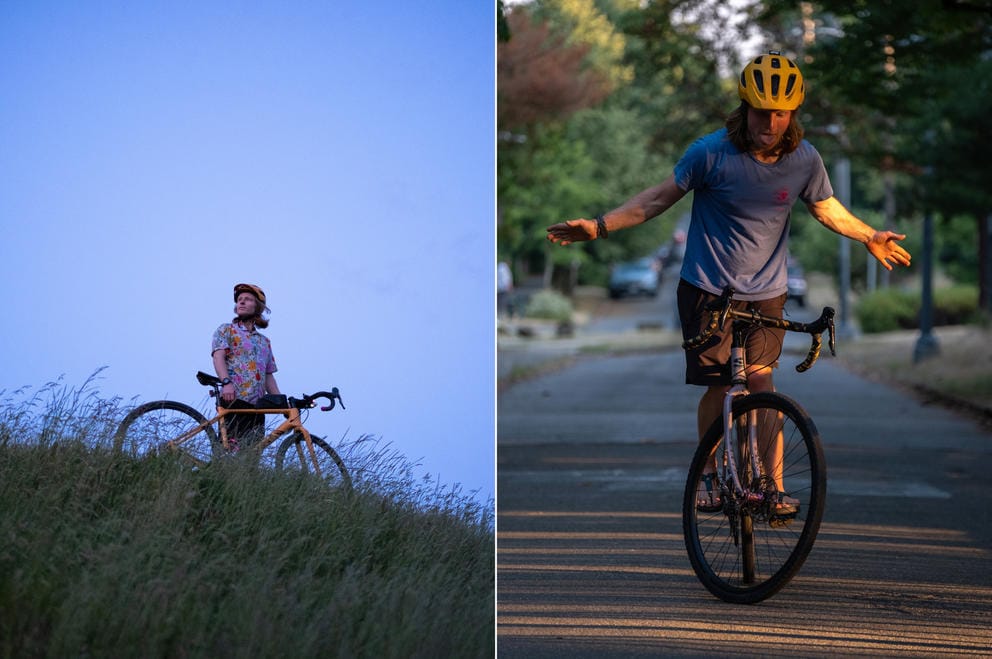
It “sounded really fulfilling to me, to have biked every single street in this place that I love,” said Roberts. (Conor Courtney for Crosscut)
He rode through the quiet streets of Fauntleroy, along the busy roads in Rainier Beach. He even managed to ride around Sand Point Country Club, but was turned away from Broadmoor.
“What is it, its own city state?” Roberts says about the gated community.
Roberts took only two extended breaks from the project, one to bikepack to and from his parents’ house in San Diego and the other after he was hit by a driver. He kept ticking off streets even as he began aeronautical & astronautical engineering graduate studies at UW.
Roberts was riding through Wallingford one rainy day when a car surged in front of him. Roberts braked but couldn’t stop in time, slamming into the car and separating his shoulder.
Insurance covered his injuries, but Roberts was unable to get compensation for trauma. He talked with bike lawyers, who said that because Roberts didn’t call police and paramedics to the scene, there was no incident report. The accident occurred on a residential street, with no security or traffic cameras, so the courts were likely to side with the 17-year-old driver, even though teen drivers are most likely to be in crashes or drive distracted.
Based on data from New York City, car drivers are highly likely to be responsible for collisions with pedestrians or cyclists. Drivers rarely face legal charges, even when they kill cyclists or pedestrians, as Roberts found. In Washington, 40% of drivers don’t stop in fatal bicycle or pedestrian collisions.
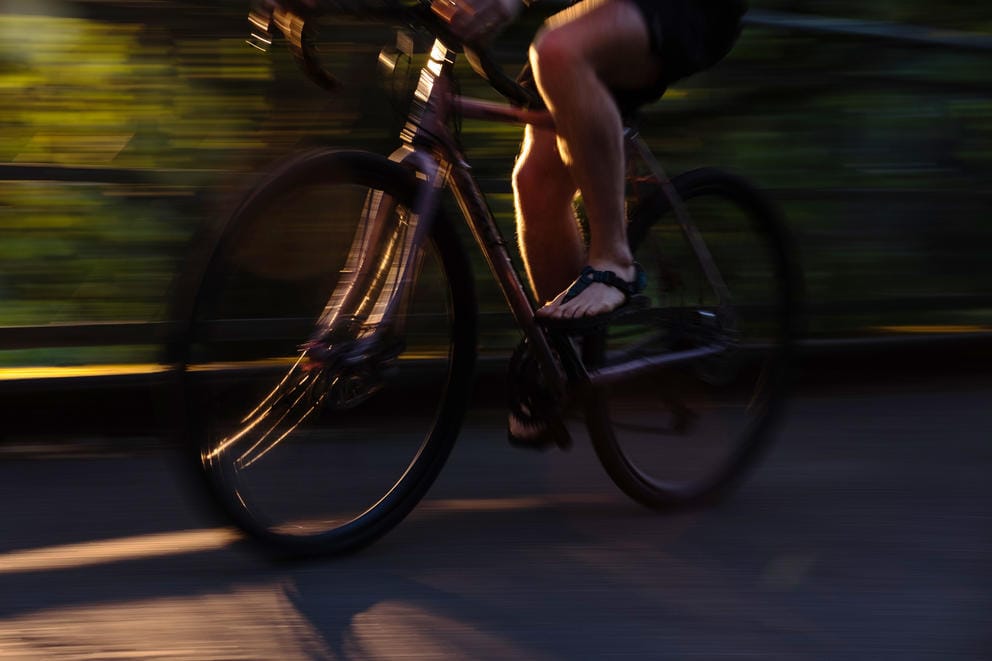
Danny Roberts rides across the Ravenna Park Bridge. (Conor Courtney for Crosscut)
Roberts feels fortunate he wasn’t killed, but pushes back on the narrative that he’s lucky it wasn’t worse. He now rides with a GoPro, so if he’s hit again he’ll have video evidence. He recommends cyclists ride with lights and helmets and familiarize themselves with what to do after a collision.
As he inched closer to his goal, Roberts felt torn between burnout and the drive to finish.
“You hit a point where you’re just like, I do not want to do this anymore. But I also cannot stop doing this,” says Roberts.
He began grinding out long rides, often cycling upward of 80 miles with almost 10,000 feet of elevation gain in a single day.
His final ride wasn’t anything special, just filling in the last streets. On a sunny day in February, about 13 months after he began, Roberts rode from Capitol Hill to Lake Washington Boulevard, taking in a rare clear view of Mount Rainier in winter.
He zig-zagged across a few streets in Brighton and Dunlap before darting across the Duwamish to a final few hills in Genesee, Riverview and Highland Park, then returning to his home near Roosevelt. He had biked over 10,000 miles in a year, about 2,000 devoted to his quest.
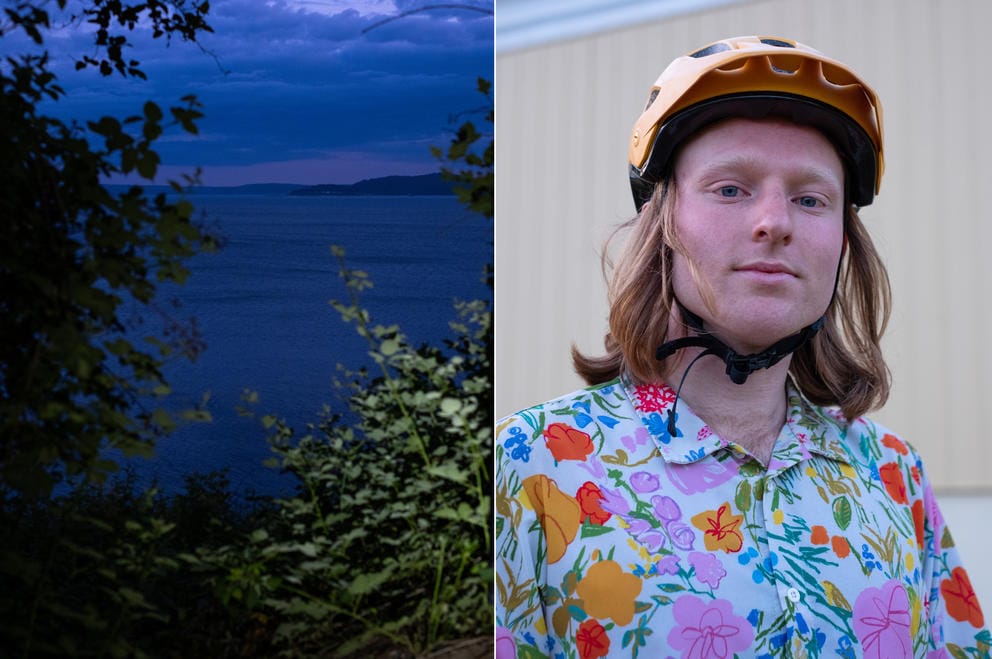
Left: A view from one of Roberts' favorite streets in Magnolia, Perkins Lane — a dead-end road that cuts through the middle of the bluff. (Conor Courtney for Crosscut)
The project increased his love of Seattle and reinforced his commitment to explore new places, even with the potential downside of sketchy roads or uninteresting blocks.
“I’m sure there’s a bunch of people in Seattle who biked way more than me. They probably went around Lake Washington 50,000 times … Which is more nuts? Going to the same place all the time? Or going somewhere new all the time?” Roberts says.
Asked what’s next, Roberts glances at a map of Washington, and says he wants to bike the entire shoreline of Puget Sound. But for now he’s content with his accomplishment.
“At the end of the day, it doesn't matter. I’m not going to get extra points in heaven for having biked every street. But I get extra points in my life, in my own head.”
The headline and story have been corrected to show that the ride around Seattle covered about 2,000 miles, which was not his total bike mileage for the year.
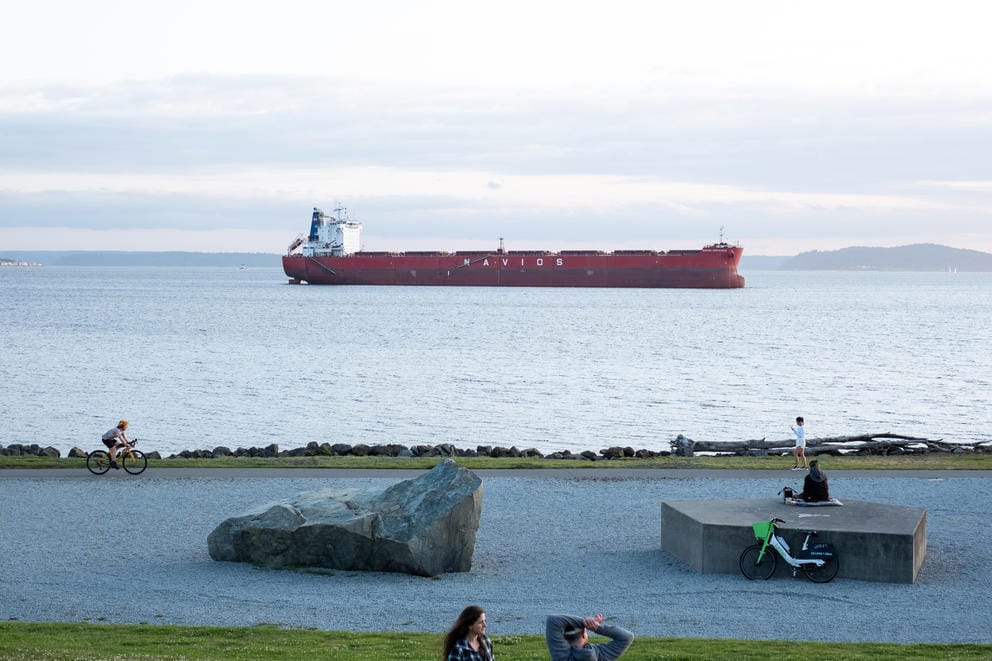
Roberts cycles along the Elliott Bay Trail in Myrtle Edwards Park on May 30, 2023. (Conor Courtney for Crosscut)



